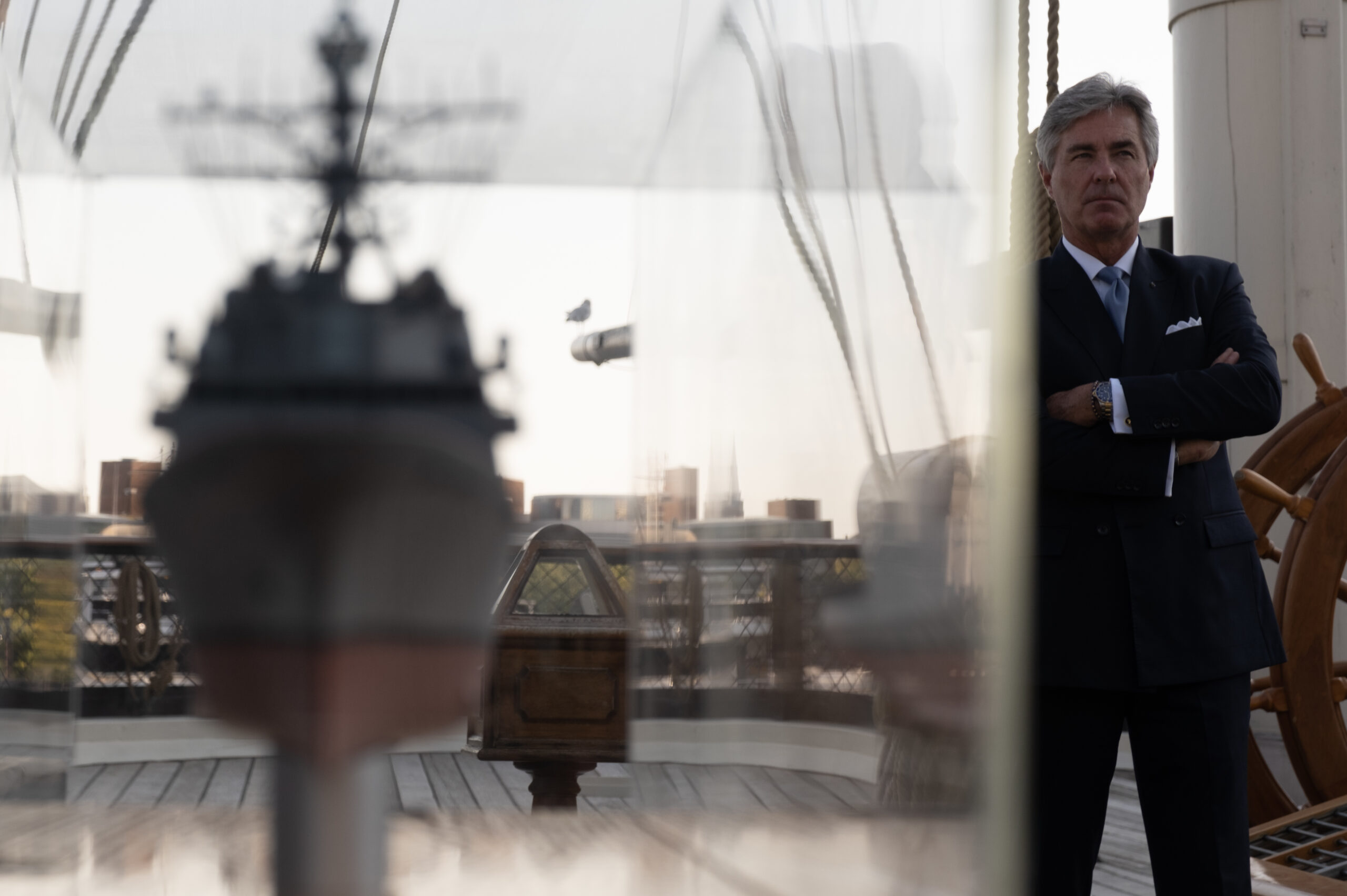
Then-Secretary of the Navy Kenneth J. Braithwaite announced USS Constellation (FFG 62) as the name for the first ship in the new Guided Missile Frigate class in Oct. 2020. (Navy)
WASHINGTON: The Navy has chosen to elongate and widen the hull of its next-generation Constellation-class frigate relative to the parent design, but the officer overseeing its production says the internal layout will largely remain the same.
“The Italians did a very good job in the design of the internal spaces, and the flow of a lot of those spaces,” Capt. Kevin Smith, program manager for the Constellation class, told attendees at the Sea Air Space exposition on Monday. “You could say we bought a bigger house, [but] from a modeling and simulation perspective, it’s exactly the same.”
In the early days of the frigate program, Navy officials repeatedly assured Congress that the program’s use of a parent design would reduce risk of delays and cost overruns. It was a big selling point for lawmakers who were keen to remind the Navy of the problems seen by the Littoral Combat Ship, Constellation’s predecessor. The Constellation frigate is based off Fincantieri’s FREMM multipurpose frigate.
While some changes are to be expected to meet the Navy’s needs, enlarging the hullform itself has the potential to change where components in the ship must be placed, as well as the overall cost.
Asked about how possible changes in the ship’s hull could affect the internal design, Smith said Fincantieri Marinette Marine, the Constellation’s prime contractor, worked with Naval Surface Warfare Center Carderock to develop a scale model of the ship and that most elements will stay true to the parent design. He cited the bridge and propulsion plant as areas where the Navy has not made any significant changes to the layout.
Another question looming around the new frigate program is the potential for a second shipyard. The Navy’s contract with FMM includes producing a technical data package the service could use to compete a production contract. Decisions about a competition for a second vendor and the timing for that contract have not been made, Smith said.
As for the lead ship, Smith said the service and FMM are planning to do a critical design review and production readiness review early next year. Fabrication of the lead vessel will begin next spring, commencing an anticipated four-year build cycle.
The first frigate will join the fleet around 2026 or 2027, Smith said. Constellation’s importance to the Navy – and the need to avoid delays – is heightened by the desire to start retiring the oldest Littoral Combat Ships. Expect the service to continue requesting congressional permission to decommission its LCS fleet in the coming years even if Congress rejects the proposal this year – it would hardly be the first time the Navy and the Hill clashed over attempted retirements.
Smith also said the service has started constructing a land-based test site in Philadelphia for the Constellation class, as required by the fiscal year 2021 defense policy bill. The site should be ready around the time the first frigate is delivered and will continue to operate until the ship is ready for deployment.






















